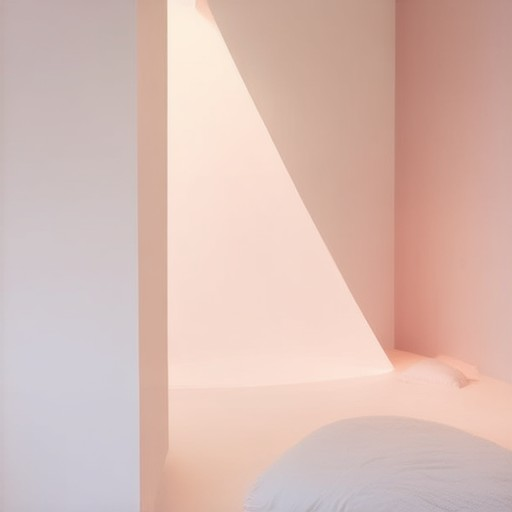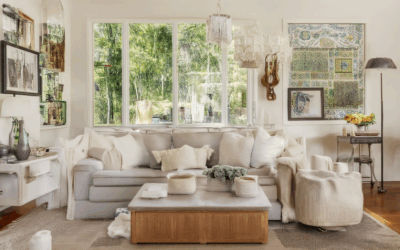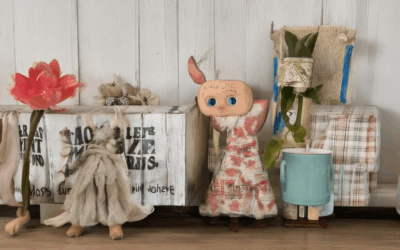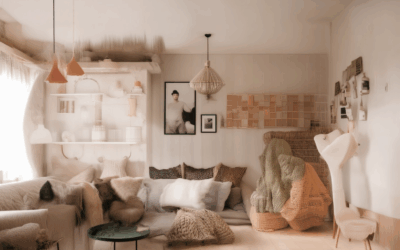Organizing a small room when it feels overwhelmed can be a daunting task, but with creative solutions, even the tiniest spaces can become functional and inviting. Whether you’re dealing with clutter, limited storage options, or a cramped layout, finding innovative ways to maximize space and streamline your routine is key. From clever storage hacks to unique design ideas, this guide offers practical strategies to transform chaotic areas into organized havens. Discover how to declutter efficiently, utilize vertical space effectively, and incorporate hidden compartments to keep everything in its place. By focusing on creativity and efficiency, you can turn a cluttered room into a serene and orderly environment, making the most of every available inch.
Key Takeaways
– Maximize Space Efficiently: Use ambient lighting, mirrors, and light colors to create an open feel and make the room appear larger.
– Declutter and Simplify: Remove unnecessary items and focus on minimalist, space-saving furniture to free up valuable space.
– Innovative Storage Solutions: Utilize vertical storage options, wall-mounted shelves, and compact furniture to make the most of limited space.
– Create a Secret Room: Transform your space with creative methods like bookcase doors, hidden compartments, or wall-mounted swing doors.
– Optimize Every Corner: Use under-the-bed storage, door organizers, and corner shelves to maximize hidden spaces.
– Plan Thoughtfully: Design layouts that allow for maximum movement and create an open flow, making the room feel more spacious.

How to Tidy Up a Small Room
Tidying up a small room can seem overwhelming, but with the right approach, it becomes manageable. Here’s a step-by-step guide to transforming your space into a clutter-free haven:
- Start with decluttering: Go through each item and decide whether it belongs in the room or not. Keep only what you truly need.
- Create zones:** Designate areas for different activities, like sleeping, dressing, and storage, to keep the room organized.
- Invest in multi-functional furniture:** Choose pieces that serve multiple purposes, like an ottoman that doubles as storage or a bed with built-in drawers.
- Categorize belongings:** Group items by type, such as clothes, books, and seasonal items, to make it easier to find what you need.
- Use vertical space wisely:** Install shelves or hooks on walls to store items like hats, bags, or jewelry without cluttering surfaces.
- Regular maintenance:** Set aside time weekly to tidy and fold clothes, sweep floors, and neaten up surfaces to prevent clutter from returning.
- Consider a minimalist aesthetic:** Simplify your decor by removing unnecessary knick-knacks and focusing on clean, functional designs.
- Label containers:** Use clear labels on bins or boxes to make organization easier and more accessible.
- Lighten the space:** Remove heavy curtains or dark-colored furniture to make the room feel larger and more airy.
How to Declutter With Little Space
Decluttering your space doesn’t have to be overwhelming, even if you’re working with limited room. By focusing on smart strategies and utilizing every inch effectively, you can transform your space into a more organized haven. Here’s a step-by-step guide to decluttering efficiently:
1. Assess Your Current Space
Become familiar with your room’s layout and identify areas that feel cluttered. Take stock of what’s taking up space and consider which items could be moved or removed to create more open space.
2. Categorize Your Belongings
Group similar items together. For example, keep electronics together, clothes in one area, and seasonal items in another. This helps in easily deciding what to keep and what to discard.
3. Utilize Vertical Storage Solutions
Maximize your wall space with shelves or hooks. Install floating shelves to store books, plants, or small trinkets. Use wall-mounted organizers for often-used items like keys or jewelry.
4. Edit Your Belongings
Ask yourself if each item brings value. If you haven’t used something in six months, it’s likely clutter. Consider donating or selling items that no longer serve a purpose.
5. Create a Cleaning Schedule
Set aside time weekly to tidy up. This prevents clutter from building up again. Focus on small tasks, like picking up clothes or sorting mail, to keep your space maintained.
6. Use Multifunctional Furniture
Invest in pieces that serve double duty. A bed with drawers underneath or an ottoman that hides extra storage can save valuable floor space.
7. Opt for Compact Solutions
Choose smaller, space-saving versions of your favorite items. For instance, use a compact dining table or a wall-mounted desk to free up floor space.
8. Regular Maintenance
Keep clutter from returning by regularly reviewing your space. Clean out junk drawers, sort through clothes, and declutter bathrooms or kitchens to prevent buildup.
By implementing these tips, you’ll not only declutter your space but also create a more functional and relaxing environment. Remember, less clutter means more peace of mind and better use of your limited square footage.

How to Organize Your Room with Too Much Stuff
Organizing a room filled with clutter can seem overwhelming, but breaking it down into manageable steps can make the process easier. Here’s a guide to help you tackle the task effectively:
Step 1: Declutter
Start by sorting through your belongings. Go through each item and ask yourself if you truly need it. Keep only what you use regularly or love. Donate or discard items you no longer need. This creates a clean slate to work with.
Step 2: Create Zones
Divide your room into distinct areas based on their function. For example:
- Sleeping Area: Designate space for your bed, nightstands, and storage for bedding.
- Dressing Area: Allocate for clothing, accessories, and personal care items.
- Study Corner: Dedicate a spot for your desk, books, and office supplies.
Step 3: Assign Storage Solutions
Use a combination of drawers, shelves, and bins to maximize space. Label containers for easy identification. Consider using vertical storage options like tall shelves for items like books or decor.
Step 4: Label Everything
Label groups of similar items to reduce confusion. Use labels on drawers, bins, or shelves to quickly locate what you need. This helps maintain order and makes tidying up faster.
Step 5: Group Similar Items
Keep like items together. For instance, group all electronics, books, or seasonal items in specific areas. This makes it easier to find what you need and keeps the space neat.
Step 6: Put Things Away Properly
Take each item and place it in its designated spot. Fold clothes neatly and store them in drawers. Place books or decor on shelves. This ensures everything has a place and reduces future clutter.
Step 7: Schedule Regular Maintenance
Set aside time weekly to tidy your room. Even 10 minutes can significantly reduce clutter over time. This routine helps keep your space organized long-term.
Step 8: Involve Others
Don’t hesitate to ask friends or family for help. Organizing can be less daunting with company, and they might benefit from the tips too!
Step 9: Evaluate Lighting and Layout
Ensure your room is well-lit to make organizing easier. Consider task lighting for areas like your desk. Rearranging furniture slightly can also free up space and improve workflow.
Step 10: Add Functional Accessories
Use organizers like drawer dividers or hooks for coats and bags. These tools can transform your space into a more functional area.
Step 11: Celebrate Progress
Take a moment to appreciate your efforts. Before-and-after photos can serve as motivation and highlight your achievements. Each small step brings you closer to a tidy room. By following these steps, you can transform a cluttered room into a calm, organized space. Remember, consistency and patience are key to maintaining order.

How to Maximize Space in a Tiny Room
Maximizing space in a tiny room requires a combination of smart design, efficient use of furniture, and thoughtful organization. Here are some proven strategies to make the most of limited space:
- Optimize Lighting:** Use ambient lighting to create an open feel. Large windows or skylights can make the room appear brighter and more spacious.
- Use Mirrors:** Incorporate large mirrors into your decor to reflect light and create an illusion of space.
- Declutter:** Remove unnecessary items to free up valuable real estate. Focus on minimalist furniture and essentials.
- Select Space-Saving Furniture:** Opt for compact, multi-functional pieces like foldable tables, stackable chairs, and wall-mounted shelves.
- Utilize Vertical Storage:** Install tall shelves or cabinets along the walls to store items that don’t require floor space.
- Choose Light Colors:** Paint the walls a light color or use light-colored flooring to make the room feel larger.
- Plan Your Layout:** Arrange furniture in a way that allows for maximum movement and creates an open flow.
- Add Rugs:** Place area rugs to define spaces without overcrowding the room.
- Bring in Plants:** Add greenery to improve air quality and add life to the space without taking up much room.
- Use the Walls:** Install wall-mounted hooks, shelves, or even a small desk to save floor space.
How to Make a Secret Room in a Small Space
Creating a secret room in a small space can be an exciting DIY project. Here are some innovative ways to transform your space into a hidden haven:
1. Bookcase Door
One popular method involves using a bookcase as a cover for a hidden door. Here’s how:
- Measure the space and cut a door size opening in the wall.
- Install a bookcase front with adjustable shelves to mask the door.
- Use a spring-loaded hinge to attach the bookcase door to the wall.
- Paint or decorate the bookcase to match your room’s style.
2. Furniture Hiding Mechanism
Transform unused furniture into a secret compartment:
- Cut a hole in the bottom of a sturdy coffee table or bench.
- Install hinges and a latch to create a hidden door underneath.
- Use a small lamp or light source to illuminate the compartment.
3. Wall-Mounted Swing Door
Convert a small wall niche into a hidden room:
- Cut into the wall to create a recessed area.
- Frame the opening and install a door that swings inward.
- Use a wall-mounted handle for easy access.
4. Attic or Closet Transformation
Utilize existing spaces for a secret room:
- Clear out an attic or closet to create usable space.
- Install a ladder or trap door leading to the hidden area.
- Consider adding lighting and storage solutions.
5. Rug-Hidden Compartment
Budget-friendly and simple:
- Remove a rug to reveal a hollow space beneath.
- Use a small ladder or stool to access the hidden area.
- Store items or convert it into a tiny seating area.
Remember to plan carefully, measure accurately, and use the right tools for a successful project. With these methods, you can create a secret room tailored to your space and needs!

How to Store a Lot of Things in a Small Room
Storing a large number of items in a small room can be challenging, but with clever organization and space-saving techniques, it’s entirely possible. Here are some effective strategies to maximize storage in a limited space:
1. Utilize Vertical Space
- Install shelves: Add floating shelves or wall-mounted units to store books, decor, and small items vertically.
- Use tall cabinets: Opt for taller storage solutions to accommodate items like seasonal clothing or kitchen essentials.
- Stack items efficiently: Stack cans, bottles, or boxes neatly in narrow spaces or on top of each other.
2. Make Use of Existing Spaces
- Under-the-bed storage: Use the space under your bed for boxes, shoes, or bedding items.
- Door organizers: Install door-mounted organizers to store coats, hats, or cleaning supplies.
- Corner storage: Place smaller items like qubits or jewelry in corner shelves or trays.
3. Innovate with Multi-Functional Furniture
- Ottomans with drawers: Purchase furniture with built-in storage, like ottomans or coffee tables.
- Bunk beds: If you have extra space, consider adding a bunk bed for guests or children.
- Adjustable shelves: Use adjustable shelves to store items of varying sizes in one unit.
4. Declutter and Label
- Remove unnecessary items: Go through your belongings and donate or throw away anything you no longer need.
- Label containers: Clearly mark boxes or bins with labels so you can easily find what you need later.
- Keep frequently used items accessible: Place essential items like clothes or toiletries in easy-to-reach locations.
5. Use the Ceiling
- Ceiling storage: Install ceiling hooks or racks to store lightweight items like bags, bikes, or holiday decorations.
- Suspended shelves: Create suspended shelves using ropes or brackets to store items above the floor.
6. Opt for Compact Solutions
- Compact appliances: Choose smaller appliances, like a compact microwave or mini fridge, to save counter space.
- Vertical kitchen tools: Use vertical knife blocks or hanging pots and pans to save counter and cabinet space.
- Clear surfaces: Keep surfaces clean by storing items in containers or baskets instead of leaving them out.
Conclusion
By combining these strategies, you can effectively store a large number of items in a small room. Prioritize vertical storage, use every available space, and stay organized with labeled containers. With a little creativity and effort, your small room can become a highly functional and clutter-free environment.





0 Comments